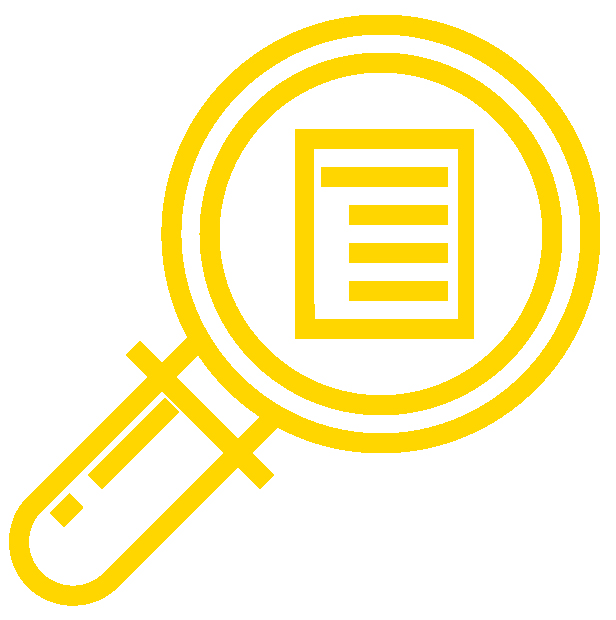
The content, assignments, and assessments for Financial Accounting are aligned to the following learning outcomes. A full list of course learning outcomes can be viewed here: Financial Accounting Learning Outcomes.
Module 0: Discuss the importance of accounting principles in your personal life
- 0.1 Use your knowledge of accounting to garner resources to fund your education
- 0.2 Use your knowledge of accounting to create a healthy financial picture for you and your family
- 0.3 Use your knowledge of accounting to finance your retirement and leave a legacy for your loved ones
Module 1: Explain the role of accounting in business
- 1.1 Define accounting and explain its history
- 1.2 Identify the ways we use accounting
- 1.3 State the accounting equation
- 1.4 Explain the effect of transactions on the accounting equation
- 1.5 Identify challenges in accounting
Module 2: Explain the basic principles of accounting
- 2.1 Describe organizations and rules that govern accounting
- 2.2 Identify fundamental concepts of Generally Accepted Accounting Principles
- 2.3 Identify fundamental principles of accrual based accounting
- 2.4 Explain the relationship between the U.S. and international accounting standards
Module 3: Understand double-entry accounting
- 3.1 Identify the basic reporting structure of accounting information
- 3.2 Identify the accounting books of record
- 3.3 Account for business transactions using double-entry bookkeeping
Module 4: Describe the complete accounting cycle
- 4.1 Describe the process of making adjusting journal entries
- 4.2 Create adjusting journal entries
- 4.3 Creating the adjusted trial balance
- 4.4 Use an adjusted trial balance to prepare financial statements
- 4.5 Prepare and post closing entries
Module 5: Describe the accounting and reporting of cash and cash equivalents
- 5.1 Explain the concept of internal control over cash
- 5.2 Establish and maintain a petty cash system
- 5.3 Recognize the significance of the bank reconciliation as an internal control
- 5.4 Compare methods of recording credit card transactions
- 5.5 Present cash and cash equivalents on the financial statements
Module 6: Describe the accounting and reporting of receivables and revenues
- 6.1 Recognize revenue received on account
- 6.2 Understand accounting for uncollectible accounts
- 6.3 Account for notes receivable
- 6.4 Describe the proper financial statement presentation of receivables
Module 7: Describe the accounting and reporting of purchases and sales of merchandise
- 7.1 Identify issues unique to merchandising companies
- 7.2 Accounting for inventory under the periodic method
- 7.3 Accounting for inventory under the perpetual method
Module 8: Describe the accounting and reporting of inventory
- 8.1 Establish the cost of items in inventory
- 8.2 Apply the conservatism principle to inventory costing
- 8.3 Demonstrate proper financial statement presentation of inventory and cost of goods sold
Module 9: Describe the accounting and reporting of property, plant, and equipment
- 9.1 Identify property, plant, and equipment
- 9.2 Compute depreciation expense on plant assets
- 9.3 Journalize entries for disposal of assets
- 9.4 Recognize proper financial presentation of property, plant, and equipment
Module 10: Describe the accounting and reporting of other current and noncurrent assets
- 10.1 Accounting for natural resources
- 10.2 Accounting for intangibles
- 10.3 Accounting for other assets
- 10.4 Present financial information for other assets
Module 11: Describe the accounting and reporting of current liabilities
- 11.1 Define current liabilities
- 11.2 Accounting for trade accounts payable
- 11.3 Describe payroll accounting
- 11.4 Identify other current liabilities
- 11.5 Illustrate proper reporting of current liabilities
Module 12: Describe the accounting and reporting of non-current liabilities
- 12.1 Recognize long-term debt financing options
- 12.2 Demonstrate an understanding of bonds payable
- 12.3 Understand accounting for leases
- 12.4 Illustrate proper reporting of non-current liabilities
Module 13: Describe the accounting and reporting concepts unique to corporations
- 13.1 Describe the corporate form of doing business
- 13.2 Account for issuance of Stock
- 13.3 Account for distributions to shareholders
- 13.4 Illustrate financial statement presentation of stockholder’s equity
Module 14: Prepare a Statement of Cash Flows
- 14.1 Define cash flows and the purpose of the Statement of Cash Flows
- 14.2 Understand how a statement of Cash Flows is prepared using the indirect method
- 14.3 Prepare a Statement of Cash Flow
Module 15: Compare financial statements and analyze performance
- 15.1 Describe how financial statements are used to analyze a business
- 15.2 Calculate ratios that indicate a company’s ability to pay short-term debt
- 15.3 Calculate ratios that indicate a company’s operating efficiency
- 15.4 Calculate ratios that analyze a company’s earnings performance
- 15.5 Calculate ratios that analyze a company’s long-term debt-paying ability
- 15.6 Compare financial statements: intercompany and intracompany
